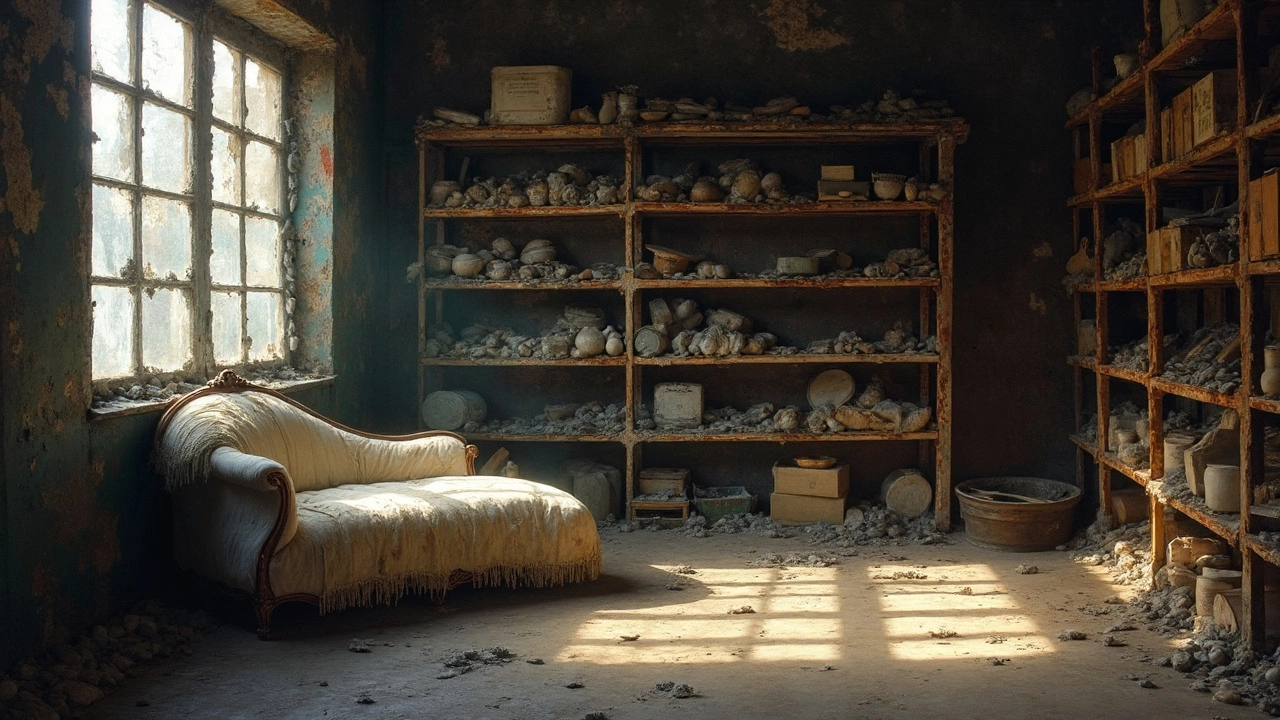Mold in Storage Units: Spot It, Stop It, Remove It
Found a dark patch on a box or a musty smell when you open your storage unit? That’s mold trying to set up shop. It can ruin furniture, documents, and even spread to other items if you don’t act fast. Below is a straight‑forward guide to help you catch mold early, keep it from coming back, and clean it up without a science degree.
Why Mold Grows in Storage Units
Most storage units are sealed, dark, and can get damp. When humidity climbs above 60 % and there’s no airflow, mold spores that are always in the air find a perfect place to feed on wood, cardboard, fabric, or any organic material you’ve stored. Leaky roofs, poor ventilation, and temperature swings in older units make the problem worse. Even a small water spill that isn’t dried quickly can become a breeding ground.
Simple Steps to Keep Mold Away
1. Choose the right unit. If you have valuable or moisture‑sensitive items, go for a climate‑controlled unit. These keep temperature and humidity in a tighter range, cutting down the odds of mold.
2. Pack smart. Use breathable containers like plastic bins with tight‑fit lids instead of cardboard boxes. Seal any gaps with tape and line the bottom of boxes with a sheet of polyethylene to block moisture from the floor.
3. Add moisture absorbers. Place silica gel packets, charcoal briquettes, or disposable dehumidifier packs on shelves. They pull excess water out of the air and are cheap enough to replace every few months.
4. Keep it ventilated. If your unit has a door that opens to the outside, leave it ajar for a few minutes each week (if security allows) to let fresh air circulate. Otherwise, stack items with a small gap between them so air can move.
5. Inspect regularly. Walk through the unit every 3‑4 weeks. Look for discoloration, soft spots, or that distinct earthy smell. Catching mold early means you can wipe it off before it spreads.
6. Clean spills immediately. A coffee spill on a wooden crate might look harmless, but the moisture can seep in and invite mold. Use a dry towel, then let the item air dry in the sun or a well‑ventilated space.
7. Use a mild cleaning solution. If you spot mold, scrub the area with a mix of water and white vinegar (1:1) or a diluted bleach solution (1 part bleach to 10 parts water). Wear gloves and a mask, then let the surface dry completely before resealing.
8. Rotate seasonal items. Store only what you need for the next few months. Items that sit untouched for a year are more likely to develop mold, especially if they’re made of fabric or paper.
By following these steps you’ll dramatically lower the chance of mold taking over your storage space. Remember, mold loves moisture and darkness—keep things dry, air‑circulated, and check often.
Quick checklist:
- Pick a climate‑controlled unit for sensitive goods
- Pack in plastic bins with tight lids
- Place silica gel or dehumidifier packs
- Leave small air gaps between stacked items
- Inspect every 3‑4 weeks for signs of mold
- Clean spills right away and use vinegar or bleach for mold spots
Take these practical actions now and you’ll keep your belongings safe, your unit smelling fresh, and avoid costly replacements later.
Does Mold Grow in Storage Units? What You Need to Know
Mold growth in storage units is more common than you might think. This article explores the conditions that favor mold development and offers practical tips to prevent it, like using climate-controlled units and proper item preparation. Understanding the risks and how to manage them can save your possessions from the damaging effects of mold. Whether you're storing old furniture or precious keepsakes, staying informed can make a big difference.
More
